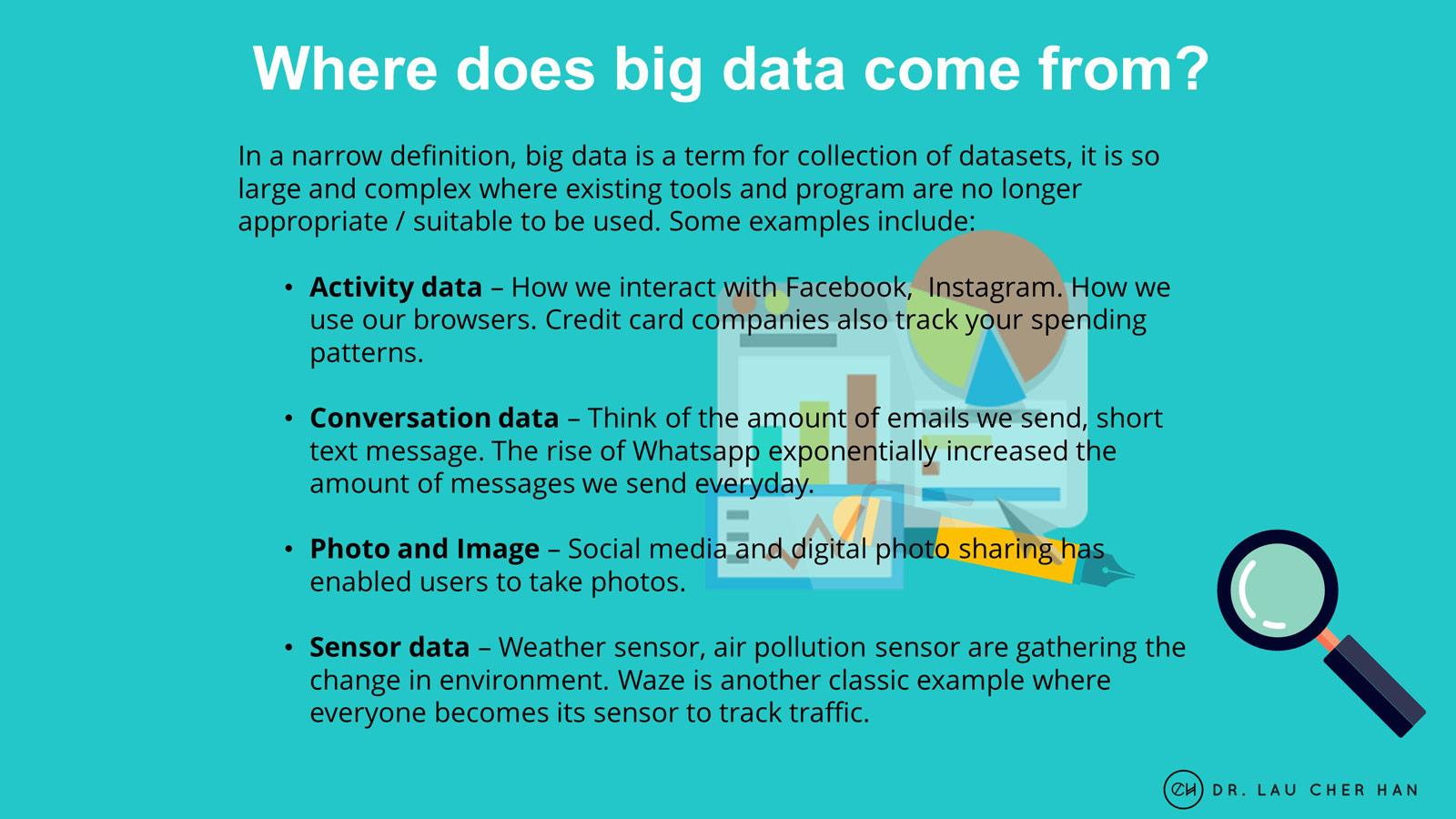Text Transcript
Here is a simple analogy to understand. Imagine you have a roof that is leaking. You use a bucket to fill the dripping water. But when the bucket is full and the excess water has no more place to go, the excess water represents Big Data.Previously, when data that is generated at a certain point was not that large and it has been referred to as terms such as a database, data analysis, data mining etc.
However, because of the large and complex data that are generated, big data comes into the picture.
In a narrow definition, Big Data is a term for a collection of datasets, that is so large and complex where existing tools and programs are no longer suitable to be used to process it at the moment.
Where does Big Data Come From

Big data is a term for collection of datasets
1. Activity Data
A very good example of how Big Data is utilized is the usage of it by social media companies.
Facebook tends to track your interests and decides what comes out in your news feed that you will most probably enjoy so that you are able to spend more time on their sites. By increasing the relevancy of the posts that appear to you, you will increase your time spent on their sites.
2. Conversation Data
The best example for this data is processed by emails or messaging applications like Whatsapp. The rise in the volume of these messages increases the collection of data that needs to be processed. This makes it another Big Data.
3. Photo and images
Social media and digital photo sharing platforms have increased a number of photos taken and uploaded due to its convenience and cost efficiency. Because of this, more photos are uploaded and it becomes Big Data that needs to be managed.
4. Sensor Data
This includes weather or air pollution sensor that gathers the change in environment. Applications like Waze does not need to have their own sensors, as users become sensors to track the situation and report it back. This Big Data collected will then be utilized to be shared among all users.

